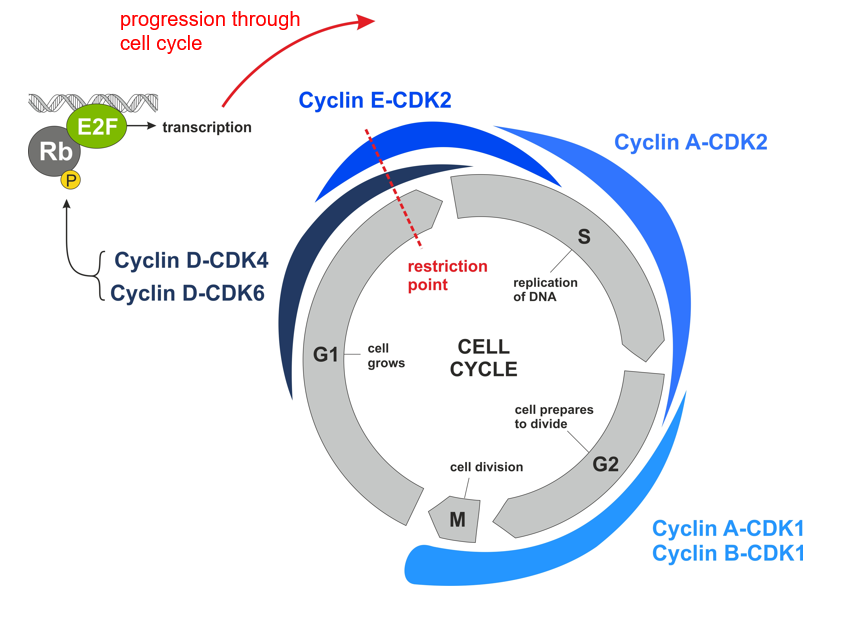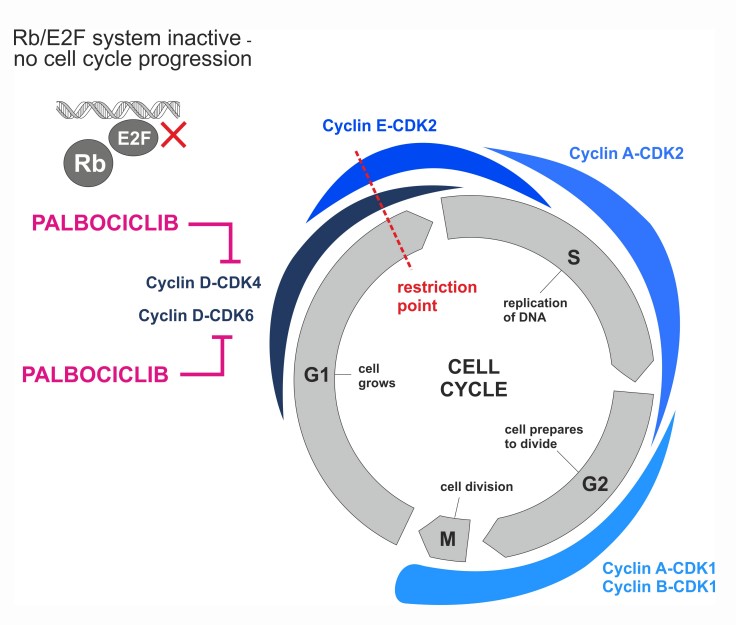Palbociclib
Overview + Rationale
- Cyclin-dependent kinases (CDKs) play important roles in the control of cell division and modulate transcription in response to several extra- and intracellular cues
- The cyclin D–CDK4/6–retinoblastoma (Rb) pathway plays a key role in the G1 phase of the cell cycle. Phosphorylation of Rb and subsequent E2F-mediated transcription are required for G1 cell-cycle progression
- Aberrations in the cell-cycle have been implicated in human cancer pathogenesis

The Rb tumor suppressor protein plays a pivotal role in the negative control of the cell cycle. It is responsible for a major G1 checkpoint, blocking S-phase entry and cell growth. Phosphorylation leads to functional inactivation of Rb. Loss of Rb cell cycle–suppressive functions can be mediated through multiple mechanisms: loss of Rb, increased signaling through CDK4 & 6 amplification, overexpression or aberration of cyclin D/E, and loss of the inhibitory function of gene products, such as CDKN2A/B the latter leading to CDK4/6 activity
Mechanism of Action
- Palbociclib is an inhibitor of CDKs 4 and 6, and blocked cell cycle progression of estrogen receptor (ER)-positive breast cancer cell lines from G1 to S in vitro
- In vivo, the combination of palbociclib and letrozole inhibited Rb phosphorylation, downstream signaling, and tumor growth compared to each drug alone using a patient-derived ER-positive breast cancer xenograft model

Stage of Development
Palbociclib is being investigated in combination with other agent(s) in the tumor types shown here. Safety and efficacy of palbociclib for the uses listed below have not been established.

 Back
Back


